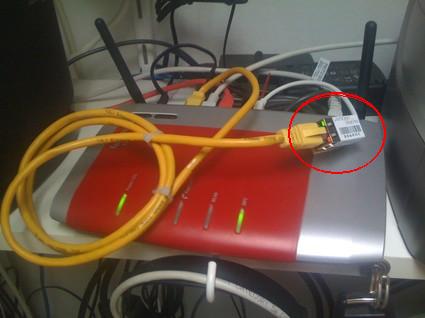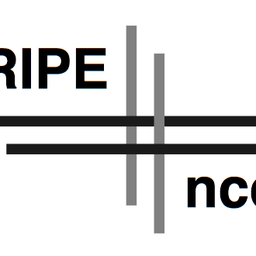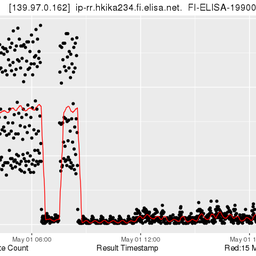Following the first announcement of the active measurement network we are planning to set up, you can find a short description below of the equipment we are planning to use for all vantage points.
In the previous article about this new active measurements network, I argued that for meaningful active measurements we'll need a very large number of vantage points, some 50,000 or even more.
In order to deploy such a large number of measurement nodes, they'll need to be extremely easy to deploy and stay running around the clock. The obvious solution that comes to mind is to distribute a piece of software like a browser plug-in following the ideas of Seti@Home and others. The nice thing about this is that distribution costs are very low and the number of potential measurement hosts is very large.
However it also has a number of significant drawbacks: host machines do not run continuously over long periods, the measurements are influenced by sharing systems and network resources with other applications on the host computer, such software is difficult to install in a corporate or computer centre environment, tampering with the results is easy ...
Considering these drawbacks we've decided to go for a very small hardware device powered via USB (see Figure 1). The USB connector is only used to supply power, no data is exchanged here.

Figure 1: Artist's impression of an Active Measurements Probe
This device provides very controlled experimental conditions; we know exactly what software runs and what resources are in use. No other applications influence the measurements. Such a device is also "24/7 friendly" as it consumes very little electricity, can be powered from almost any USB connection and there is no need to switch it off once installed. One typical scenario is to connect it to a home router and power it using one of the router's USB connections. This way, measurements can be performed at any time while the router is on, typically 24/7:

Figure 2: Active Measurement Probe prototype in action
This photograph shows an early prototype of the device performing ping measurements from my home to a number of DNS servers over both IPv4 and IPv6. Note the small size of the device and the fact that it obtains power directly from the router via the white USB cable.
In addition to being easily deployable the device is also much more tamper resistant than a pure software solution; it is quite difficult to interfere with its operation or to change the measurement results directly. Yet one can easily stop the measurements at any time simply by disconnecting the USB cable. Also the device is not really an attractive target for botnet herders; the OS and applications are exotic, there are no open ports facing the Internet and the device does not have a lot of processing power.
We are currently testing prototypes. They look very promising and we are confident that we can deploy 300+ of such a device within the next few months. The challenges are how to schedule measurements and collect results in a network of thousands of devices. Also we have to motivate people like you to host the probes and find sponsors for both the hardware and operating costs of such a network. We have quite some good ideas on how to do that. Stay tuned!





Comments 15
The comments section is closed for articles published more than a year ago. If you'd like to inform us of any issues, please contact us.
Anonymous •
Hey Daniel,<br /><br />Does this mean that you guys are not looking at a software option? It seems like it would be nice for people to have the choice.<br /><br />--Richard
Anonymous •
I can say that software implementations are not immediately ruled out, but our current preference is hardware -- mainly for the reasons mentioned above.<br /><br />Robert
Anonymous •
I am very reluctant to develop and deploy a software probe similar to SETI@HOME or various browser plugins. There are many reasons for this and they are explained in the article. The real show stoppers for me are the responsibility that comes with running a networked application on a user machine and the difficulty to produce verifyable and above all "comparable" results. The RIPE NCC cannot run the risk to inadvertently provide a "RIPE BotNet" or to do harm to a users system. Neither can we use measurement data that is taken and processed in environments over which we have little control. Could we trust that data?
Anonymous •
Any chance the data will be open for anyone to see?<br /><br />Currently I am using iPingTest and some MRTG probes for monitoring my own DSL line. <br /><br />Would it somehow be possible to volunteer to run a RIPE probe, and will the data be 'open', i.e. would it be possible to view your own data, and see the aggregated data in order to compare it?
Anonymous •
Hi,<br /><br />We certainly want to share the data that comes out of these measurements with the involved / interested parties!<br /><br />Someone who runs such a probe -- a "host" in our current terminology -- will have access to information about measurements either initiaded by him, or where his probe participated in. We need to figure out the exact details on this, but openness is the general approach.<br /><br />We'll be calling for volunteers to host such probes - stay tuned! :-)<br /><br />Robert<br />
Anonymous •
I certainly stay tuned :)<br /><br />Currently I am already monitoring 4 lines (2x ADSL, 1x VDSL, 1x DOCSIC) with iPingTest. But it only let you see your download speed and nothing more.<br />With MRTG other stuff can be monitored, but it is not really manageable and you would need probes on all locations to have less points of failure.<br /><br />Currently when my own VDSL line is down, I have no way to capture MRTG data for the other lines. With both methods I am also partially dependent on the machines running (or not) behind the line.
Anonymous •
nice work!<br /><br />the measurements are still influenced by sharing systems and network resources with other computers on the same network (wired and wireless)... you need to block all devices but your own when runing a measure.<br /><br />Regards, <br />DR
Anonymous •
I got an example of this by means of an software client I run.<br /><br />The graph behind this link clearly shows a clogged internet line.<br /><a href="http://www.ipingtest.com/nl/myipingtest/view/3472234368779419649" rel="nofollow">http://www.ipingtest.com/[…]/3472234368779419649</a>
Anonymous •
Yes in principle that is true. Blocking all other traffic is not really an option because the people hosting the probes would not really like it if we did that. The only way around this would be to use a router as a probe and *measure* the load which is present during the measurements; then one can take it into account. This is what some others like SamKnows do. We have decided against it because we want to avoid sniffing any traffic; our probes can be installed behind a switch port that do not see any user traffic. Our research shows that this is essential for quite a number of potential hosts, especially those in commercial environments. <br /><br />Also routers are a bit too expensive for us right now since we aim for 10s of thousands of probes eventually. However it would be great if in the future we can convince some router manufacturers to include measurment code in their software which users can enable if they choose to. But before considering this we want to get version 1 of the measurement network up and running.<br /><br />In the mean time we will try to take the network load into consideration by making many measurements from a number of probes. When doing that we can use heuristics like considering only the variance that is common to all measurements.
Anonymous •
What kind of hardware is that? Do you plan to publish the software used? I believe that other groups would be interested in deploying this kind of probes in specific contests.
Anonymous •
<a href="http://www.lantronix.com/device-networking/embedded-device-servers/xport-pro.html" rel="nofollow">http://www.lantronix.com/[…]/xport-pro.html</a><br /><br />We have no concrete plans to publish the software since it is not even completed yet. We like to cross our bridges in sequence ;-)<br /><br />However if someone wanted to use our work for a "specific" context we would certainly consider sharing it. We would be looking for a relationship with mutual benefits in this case, like sharing results in real time or something similar.<br /><br />
Anonymous •
Further: We will provide opportunities for sponsors to deploy probes in specific contexts while still being part of the RIPE NCC measurement network. In a future article I will describe our ideas about this and the specific mechanisms we plan to use for that. Stay tuned.
Anonymous •
The idea is very good, I think the implementation a bit less.<br /><br />I agree a software/plugin to run on a computer like Seti@Home is probably not the best solution, but why not a piece of software that can be installed on a router, e.g. an add-on to popular alternative firmwares like DD-WRT or Open-WRT?<br /><br />In particular I dislike the fact that the device is USB-powered... I can spare a Ethernet-port on my router for it, but I only have one USB port and I use that to connect my hard-drive to the router... Is the power adapter included in the package?
Anonymous •
CPE firmware is on the road map for a later time, no guarantee it will ever happen or when exactly. <br /><br />About the USB power supply: <br /><br />Those attending RIPE-61 in Rome may very well be pleasantly surprised concerning the goodies they receive. ;-)<br /><br />If someone who does not come to Rome convinces us that they really cannot afford the cost of a USB power supply, we will add one to the package. We just do not want to ship hundreds of them without a real need; we will not provide them for exotic plug formats like the one used in the UK ;-).
Anonymous •
Thanks for the quick answer.<br /><br />I don´t think it´s an issue of "affording" the power supplier... just knowing what´s in the box so one can plan ahead ;)<br /><br />Unfortunately I won´t be able to make it to Rome, but I´d be happy to help out if you decide to release some software for DD-WRT ;) (BTW, if you put out the specs maybe someone can start a project on Sourceforge... you don´t necessarily have to do all the work yourselves ;)).<br /><br />